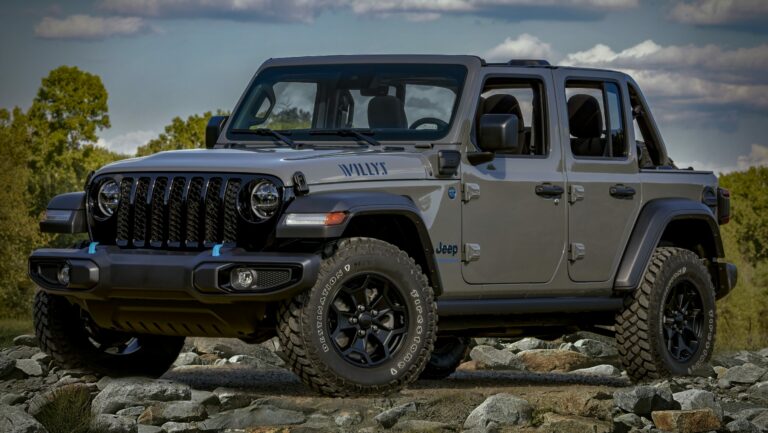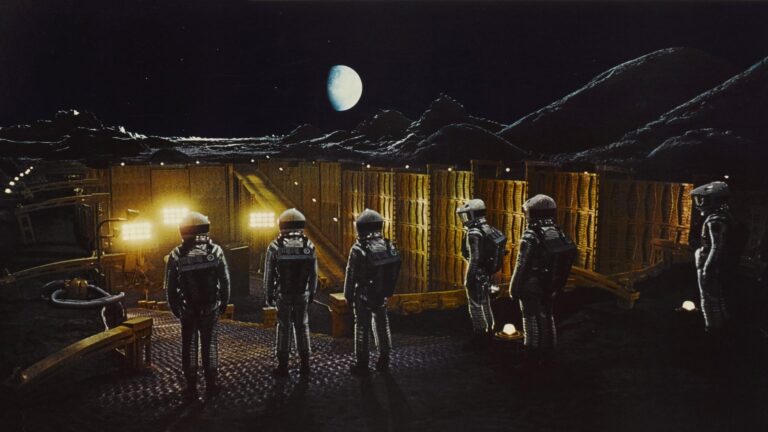Old Jeep Commander For Sale: Your Comprehensive Buyer’s Guide
Old Jeep Commander For Sale: Your Comprehensive Buyer’s Guide jeeps.truckstrend.com
Introduction: Rediscovering a Boxy Icon on a Budget
In the sprawling landscape of used SUVs, certain vehicles stand out not just for their utility, but for their distinct character and enduring appeal. Among these is the Jeep Commander (XK/XH), produced from 2006 to 2010. Often overshadowed by its more famous sibling, the Grand Cherokee, the Commander carved its own niche as Jeep’s first three-row SUV since the Grand Wagoneer. Its rugged, boxy silhouette harks back to classic Jeep aesthetics, offering a blend of family-friendly space, genuine off-road capability, and a surprisingly affordable entry point into the world of larger SUVs.
Old Jeep Commander For Sale: Your Comprehensive Buyer’s Guide
For those in search of a robust, versatile, and characterful vehicle that doesn’t break the bank, an "Old Jeep Commander For Sale" presents a compelling proposition. Whether you’re a growing family needing extra seats, an outdoor enthusiast requiring serious hauling and trail prowess, or simply someone who appreciates a vehicle with a unique presence, the Commander offers a blend of features that modern SUVs often lack at its price point. This comprehensive guide will delve into everything you need to know about finding, evaluating, and owning one of these distinctive Jeeps.
I. Why Choose an Old Jeep Commander? The Enduring Appeal
The allure of the Jeep Commander goes beyond its accessible price tag. It represents a unique intersection of practical utility and adventurous spirit that many contemporary SUVs have sacrificed for sleekness and on-road refinement.
Key Benefits and Appeal:
- Distinctive Styling: The Commander’s boxy, upright design is a throwback to classic Jeeps, setting it apart from the often-generic shapes of modern crossovers. It exudes a rugged, no-nonsense aesthetic that resonates with traditional SUV enthusiasts.
- Three-Row Seating: A primary selling point, the Commander offers standard three-row seating, making it a viable option for larger families or those who frequently transport multiple passengers. While the third row is best suited for children or short trips for adults, it significantly enhances the vehicle’s versatility.
- Genuine Jeep Capability: Beneath its angular exterior, the Commander shares its platform with the WK-generation Grand Cherokee, meaning it inherited serious off-road DNA. Available with sophisticated 4×4 systems like Quadra-Trac II and the highly capable Quadra-Drive II (with electronic limited-slip differentials), the Commander can tackle challenging terrain far beyond what most crossovers dare.
- Robust Engine Options: Buyers could choose from a capable 3.7L V6, a balanced 4.7L V8, or the powerful 5.7L HEMI V8. These engines provide ample power for highway cruising, towing, and off-road excursions, offering durability when properly maintained.
- Affordability: As an older model, the Commander’s depreciation has made it an incredibly affordable option in the used market. This allows buyers to access a large, capable SUV for a fraction of the cost of a new vehicle, freeing up budget for potential maintenance or desired modifications.
- Practicality and Towing: With its strong chassis and powerful engine options, the Commander boasts impressive towing capacities, often exceeding 6,500 lbs when properly equipped. This makes it suitable for hauling boats, campers, or utility trailers.

For the buyer seeking a blend of spaciousness, rugged capability, and a unique aesthetic without breaking the bank, an Old Jeep Commander presents a compelling and rewarding choice.
II. Understanding the Jeep Commander Lineup: Trims and Engines
To make an informed purchase, it’s crucial to understand the different configurations of the Jeep Commander.
Trim Levels:
- Sport (Base Model): Typically came with the 3.7L V6 engine, cloth seats, and basic amenities. It’s the most common and often the most affordable variant.
- Limited: A step up, offering more premium features like leather seating, power-adjustable front seats, automatic climate control, better sound systems, and often the 4.7L V8 as standard or optional.
- Overland (Top Trim): The most luxurious version, featuring unique exterior trim, more advanced technology, heated front and second-row seats, premium audio, and usually the 5.7L HEMI V8. Overlands often came with the most capable 4×4 systems.
Engine Options:
- 3.7L PowerTech V6: (210 hp, 235 lb-ft torque) Standard on Sport models. Adequate for daily driving, but can feel underpowered when fully loaded or towing. Most fuel-efficient option, but still relatively thirsty for a V6.
- 4.7L PowerTech V8: (235-305 hp, 305-334 lb-ft torque, depending on year) Often found in Limited models. A good balance of power and efficiency (relative to the HEMI). Known for reliability if maintained, but some earlier versions had valve seat issues.
- 5.7L HEMI V8: (330-357 hp, 375-390 lb-ft torque) Standard on Overland, optional on Limited. Offers robust acceleration and excellent towing capability. Features Multi-Displacement System (MDS) for improved highway fuel economy (when active). Requires proper maintenance, especially regarding spark plug changes and oil quality.
Drivetrain Options:
- 2WD (Rear-Wheel Drive): Available on all trims, offering better fuel economy but no off-road capability.
- Quadra-Trac I: Full-time 4WD system, essentially an all-wheel-drive system with no low-range gearing. Good for light snow and slippery roads.
- Quadra-Trac II: Full-time 4WD system with a two-speed transfer case (high and low range). More capable for off-roading and challenging conditions.
- Quadra-Drive II: The most advanced system, building on Quadra-Trac II with electronic limited-slip differentials (ELSDs) at both the front and rear axles. Provides superior traction in extreme off-road scenarios by actively sending power to wheels with grip.
Understanding these variations will help you identify the best Commander for your specific needs and budget.
III. What to Look For When Buying an Old Jeep Commander: A Pre-Purchase Checklist
Buying any used vehicle requires diligence, but an older SUV like the Commander, which might have seen some tough use, demands extra scrutiny.
Key Areas to Inspect:
-
Body and Frame:
- Rust: Common issue, especially on models from regions with road salt. Check wheel wells, rocker panels, undercarriage, and around the rear liftgate and windows. Surface rust on the frame is common, but deep, structural rust is a red flag.
- Accident Damage: Look for inconsistent panel gaps, mismatched paint, or signs of repair. A clean CarFax/AutoCheck report is essential, but physical inspection is paramount.
-
Engine:
- Leaks: Check for oil, coolant, or power steering fluid leaks around the engine bay and underneath the vehicle.
- Noises: Listen for knocking, ticking (especially on 4.7L and HEMI, which can indicate lifter issues or exhaust manifold leaks), or grinding sounds.
- Service History: Ask for maintenance records. Regular oil changes are critical for the longevity of all engines, particularly the HEMI.
- 4.7L V8 Specific: Listen for a "ticking" noise that could indicate issues with valve seats or lifters.
- 5.7L HEMI V8 Specific: Check for proper MDS operation (should seamlessly switch between 4 and 8 cylinders at highway speeds, though this is hard to test on a short drive). Ensure spark plugs have been changed per schedule.
-
Transmission:
- Fluid Condition: Check the transmission fluid (if a dipstick is present, often sealed) – it should be reddish-pink, not dark brown or smell burnt.
- Shifting: During a test drive, ensure shifts are smooth, without harsh clunks, slipping, or delayed engagement. Test both upshifts and downshifts.
-
Drivetrain and 4WD System:
- Transfer Case: If equipped with 4WD, ensure the 4WD system engages smoothly in both high and low range (if applicable). Listen for grinding or clunking.
- Differentials: Check for leaks around the front and rear differentials. Listen for howling or whining noises, especially when turning.
-
Suspension and Steering:
- Shocks/Struts: Look for fluid leaks from shocks. Bounce each corner of the vehicle – it should settle quickly.
- Bushings/Joints: Listen for clunks or squeaks over bumps, indicating worn bushings, ball joints, or tie rods.
- Power Steering: Check fluid level and condition. Listen for groaning noises when turning the wheel at low speeds.
-
Brakes:
- Rotor Wear: Inspect rotors for deep grooves or excessive rust.
- Pedal Feel: Pedal should be firm, not spongy or require excessive force. Listen for squealing or grinding.
-
Electrical and Interior:
- HVAC: A common issue is failing HVAC blend doors, leading to no or inconsistent heating/cooling from certain vents. Test all temperature and vent settings.
- Power Windows/Locks/Mirrors: Test all power accessories.
- Dashboard Lights: Ensure no warning lights (Check Engine, ABS, Airbag, 4WD) are illuminated.
- Infotainment: Test the radio, navigation, and any other electronic features.
- Interior Wear: Assess the condition of seats, carpets, and headliner, especially the third row.
-
Documentation and Test Drive:
- Service Records: Crucial for understanding the vehicle’s history.
- Title/VIN Check: Verify the VIN matches documents and run a CarFax/AutoCheck for accident history, odometer discrepancies, and past service.
- Test Drive: Drive on various road types (city, highway, bumps) and engage the 4WD system if possible. Pay close attention to how the vehicle handles, accelerates, brakes, and sounds.
Consider having a pre-purchase inspection by a trusted mechanic, especially if you’re not mechanically inclined. This small investment can save you from costly surprises down the road.
IV. Common Issues and Solutions for the Jeep Commander (XK/XH)
While robust, the Old Jeep Commander, like any vehicle of its age, has its quirks and common problem areas. Being aware of these can help you budget for potential repairs and make an informed purchase.
Common Challenges:
- HVAC Blend Doors: This is perhaps the most notorious issue. The plastic actuators for the blend doors inside the dashboard can break, leading to inconsistent heating or cooling, often specific to one side or vent. Repair involves extensive dashboard disassembly, making it labor-intensive and costly if done by a shop. DIY solutions are available, but require patience.
- Rust: As mentioned, rust can be a significant concern, especially on the undercarriage, rocker panels, and around the rear liftgate. Thorough inspection is key.
- Electrical Gremlins: Issues with the Totally Integrated Power Module (TIPM) can cause various electrical malfunctions, from non-working fuel pumps to erratic wipers. Power window motors can also fail.
- Fuel Economy: Regardless of the engine, the Commander is a heavy, boxy SUV. Fuel economy is not its strong suit, especially with the V8 engines. Be prepared for higher fuel costs.
- Suspension Components: Over time, bushings, ball joints, and tie rods can wear out, leading to clunking noises or loose steering. These are standard wear items for most vehicles of this age.
- Engine-Specific Issues:
- 4.7L V8: Some earlier models (pre-2008 refresh) could have valve seat issues, leading to misfires.
- 5.7L HEMI V8: Can be prone to lifter/camshaft wear if oil changes are neglected or incorrect oil is used. Spark plug changes are also more involved and expensive due to the 16 plugs.
Practical Solutions and Preventative Measures:
- Thorough Pre-Purchase Inspection: This is your best defense against inheriting major problems.
- Budget for Repairs: Set aside a contingency fund for potential repairs, as even a well-maintained older vehicle will eventually need attention.
- DIY Potential: Many common issues, especially electrical and some mechanical repairs, are well-documented on owner forums and YouTube, making the Commander a relatively DIY-friendly vehicle for those inclined.
- Aftermarket Support: Due to sharing many components with the popular Grand Cherokee WK, parts for the Commander are generally abundant and reasonably priced, both OEM and aftermarket.
- Find a Reputable Mechanic: If DIY isn’t your forte, seek out a mechanic with experience working on Jeeps or older Chrysler products.
- Regular Maintenance: Adhering strictly to maintenance schedules, especially for fluid changes (oil, transmission, differential, transfer case), is paramount for longevity.
While the Commander has its known weaknesses, none are typically deal-breakers if you approach the purchase informed and are prepared for proper maintenance.
V. Owning and Maintaining Your Classic Commander: Tips for Longevity
Once you’ve acquired your Old Jeep Commander, a proactive approach to maintenance will ensure years of reliable service and enjoyment.
- Adhere to Service Intervals: Follow the manufacturer’s recommended maintenance schedule, especially for oil changes (critical for the V8s), transmission fluid, transfer case fluid, and differential fluid changes. These fluids are the lifeblood of your vehicle’s major components.
- Regular Inspections: Periodically inspect your vehicle for signs of wear, leaks, or rust. Catching small issues early can prevent them from becoming costly major repairs. Pay particular attention to the undercarriage for developing rust.
- Fluid Checks: Regularly check engine oil, coolant, power steering, and brake fluid levels.
- Tire Care: Maintain proper tire pressure, rotate tires regularly, and get alignments as needed to ensure even tire wear and optimal handling.
- Address Warning Lights Promptly: If a Check Engine light or any other warning indicator illuminates, don’t ignore it. Get the code read and diagnose the issue.
- Join Owner Forums: Online communities for Jeep Commander owners are invaluable resources. You can find troubleshooting tips, DIY guides, parts recommendations, and connect with other enthusiasts.
- Invest in Quality Parts: While aftermarket parts can save money, sometimes investing in OEM or high-quality aftermarket components pays off in the long run regarding durability and fitment.
By being diligent with maintenance and proactive in addressing issues, your Old Jeep Commander can continue to be a dependable and capable companion for many adventures to come.
Table: Estimated Price Ranges for Old Jeep Commander For Sale
Please note that these prices are general estimates and can vary significantly based on location, exact mileage, specific options, maintenance history, and overall market demand. "Condition" plays a massive role in the final price.
| Model Year Range | Trim Level | Condition (Approx. Mileage) | Estimated Price Range (USD) | Key Considerations | ||
|---|---|---|---|---|---|---|
| 2006-2010 | Sport | Poor (>180k miles) | $2,000 – $4,000 | Significant cosmetic/mechanical issues, rust, high mileage. Best for project or parts. | ||
| 2006-2010 | Sport | Fair (120k-180k miles) | $4,000 – $6,500 | Average wear & tear, some minor repairs likely needed. Good daily driver potential. | ||
| 2006-2010 | Sport | Good (<120k miles) | $6,500 – $9,000 | Well-maintained, lower mileage for age, minor imperfections. Solid value. | ||
| 2006-2010 | Limited | Poor (>180k miles) | $3,000 – $5,000 | High mileage, neglected features, potential major repairs. | ||
| 2006-2010 | Limited | Fair (120k-180k miles) | $5,000 – $8,000 | Average condition for age, all features generally working, may need some TLC. | ||
| 2006-2010 | Limited | Good (<120k miles) | $8,000 – $12,000 | Clean, well-maintained, all luxury features functional, desirable spec. | ||
| 2006-2010 | Overland | Fair (120k-180k miles) | $6,000 – $9,000 | Top trim, often higher mileage, check all premium features (sunroof, navigation, heated seats). | ||
| 2006-2010 | Overland | Good (<120k miles) | $9,000 – $15,000+ | Excellent condition, fully loaded, rare find, strong investment for enthusiasts. | ||
| Factors Influencing Price: | – Engine (HEMI often commands more) | – Drivetrain (4WD vs 2WD, Quadra-Drive II adds value) | – Maintenance history & records | – Optional features (sunroof, navigation, rear DVD) | – Regional demand & rust belt location | – Clean title vs. salvage/rebuilt |
Frequently Asked Questions (FAQ) About Old Jeep Commander For Sale
Q1: Is the Jeep Commander a reliable used SUV?
A1: The Jeep Commander can be reliable, but its reliability largely depends on how well it was maintained by previous owners. Like any vehicle of its age, it will require routine maintenance and potentially some repairs. The 4.7L V8 is generally considered robust, while the 5.7L HEMI is powerful but demands meticulous oil changes. Common issues like HVAC blend doors and rust are well-known but often fixable.
Q2: What is the best engine for the Jeep Commander?
A2: It depends on your priorities. The 3.7L V6 is the most fuel-efficient (relatively) but can feel underpowered. The 4.7L V8 offers a good balance of power and decent reliability. The 5.7L HEMI V8 provides excellent power for towing and acceleration but has the worst fuel economy and requires specific maintenance. For most buyers, the 4.7L V8 offers the best compromise.
Q3: Does the Jeep Commander have third-row seating?
A3: Yes, all Jeep Commander models came standard with three-row seating. The third row is best suited for children or for adults on shorter trips due to limited legroom.
Q4: Is the Jeep Commander good off-road?
A4: Absolutely. Based on the WK Grand Cherokee platform, the Commander inherited genuine off-road capabilities, especially when equipped with Quadra-Trac II or, ideally, Quadra-Drive II 4×4 systems. Its solid axle rear suspension (on some trims) and ample ground clearance make it a capable trail vehicle.
Q5: What kind of fuel economy can I expect?
A5: The Jeep Commander is not known for its fuel efficiency.
- 3.7L V6 (4×2/4×4): Roughly 15-16 MPG city / 19-20 MPG highway.
- 4.7L V8 (4×2/4×4): Roughly 14-15 MPG city / 18-19 MPG highway.
- 5.7L HEMI V8 (4×2/4×4): Roughly 13-14 MPG city / 17-18 MPG highway.
These figures can vary based on driving style, maintenance, and vehicle condition.
Q6: Are parts for the Jeep Commander readily available and expensive?
A6: Parts are generally readily available and reasonably priced. The Commander shares many components with the popular Grand Cherokee (WK generation), which helps with parts commonality and aftermarket support. Specific parts for the third-row seating or unique body panels might be harder to find used, but mechanical parts are abundant.
Q7: What are the most common problems I should look out for?
A7: The most frequently reported issues include:
- HVAC blend door failures (affecting heating/AC distribution).
- Rust, particularly on the undercarriage, rocker panels, and around the rear liftgate.
- Electrical issues, sometimes related to the TIPM (Totally Integrated Power Module).
- Worn suspension components (bushings, ball joints) due to age and weight.
Conclusion: The Commander’s Enduring Journey
The Old Jeep Commander For Sale represents more than just a used SUV; it’s an opportunity to own a distinctive piece of Jeep history, offering a rare combination of three-row practicality, genuine off-road capability, and unmistakable style at an accessible price. While it demands a careful pre-purchase inspection and commitment to regular maintenance, the rewards of owning this rugged icon are considerable.
For the right buyer – one who appreciates its unique aesthetics, understands its mechanical needs, and seeks adventure or utility without breaking the bank – the Jeep Commander offers a truly rewarding ownership experience. It stands as a testament to a time when SUVs were designed with a clear purpose: to be capable, spacious, and undeniably tough. In a market flooded with soft-roading crossovers, the Commander remains a refreshing reminder of what a true SUV can be.





